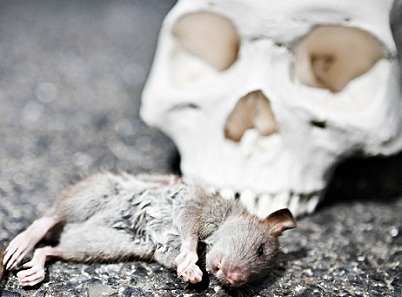BREAKING NEWS! Chipmunks In the Border Of California And Nevada Found Infected With Pneumonic Plague That Is Transmissible To Humans!
Source: Pneumonic Plague Aug 04, 2021 3 years, 7 months, 4 weeks, 2 days, 5 hours, 4 minutes ago
U.S. Medical News: The U.S. Forest Service has announced urgent warnings that chipmunks in the Lake Tahoe Forest vicinity that near the borders between California and Nevada have been found to be infected with plague that is transmissible to humans.
https://www.facebook.com/LakeTahoeUSFS/posts/3965838150211047
https://storymaps.arcgis.com/stories/efd9ae9cc06a4f6b9d7fb5120def0ca2

The lethal infectious disease: Plague is caused by the bacteria Yersinia pestis, which commonly infects wild rodents, including ground squirrels and chipmunks. In some cases, humans, cats, and other animals can become infected if they live in or visit areas where wild rodents, naturally infected with the plague, are present.
Alarmingly plague is a dangerous disease which can cause a wide range of signs and symptoms, depending on how the patient was exposed to the bacteria.
https://www.cdc.gov/plague/symptoms/index.html
The most common type is the bubonic plague, wherein patients develop the sudden onset of fever, chills, headache, weakness, and swollen lymph nodes called buboes. This type of plague occurs through flea bites. The bacteria usually replicate in the lymph nodes closest to the entry point and spread to the other parts of the body.
Another called septicemic plague causes fever, chills, extreme weakness, stomach ache, shock, and bleeding into the skin and organs. In this type of plague, the skin and tissues may turn black and die.
The last type is called pneumonic plague which causes fever, headache, fatigue, and pneumonia, characterized by shortness of breath, cough, chest pain, and bloody or watery mucus secretions. This results from the inhalation of infected droplets. It is the most severe form of plague and can spread from person to person.
Those at high risk may be vaccinated. Those exposed to a case of pneumonic plague may be treated with preventive medication. If infected, treatment is with antibiotics and supportive care. Typically antibiotics include a combination of gentamicin and a fluoroquinolone.
The risk of death with treatment is about 10% while without it is about 70%.
The U.S. Forest Service Lake Tahoe Basin Management Unit announced that based on the positive plague tests and planned Vector Control treatments, the Taylor Creek Visitor Center, Kiva Beach, and their respective parking areas will be closed for six days.
According to the forest officials, the presence of the plague disease was discovered in Parts of Lake Tahoe close after chipmunks test positive for plague. Officials are closing off some areas on the south shore of Lake Tahoe after some chipmunks tested positive for plague, an infectious disease that affects both humans and other mammals.
It was however said that the Tallac Site or Kiva Picnic parking area will remain open as staff and volunteers will be located at the Tallac Historic Site.
&
lt;br />
As of the last one hour, no details have emerged if any humans in the vicinity have been detected with the disease yet but some local health officials are worried that the probability of some lake visitors being infected and not knowing that are infected with the plague are very high and they might end up as vectors of the pneumonic plague.
Typically in California, the most common way plague is transmitted to humans is when they are bitten by infected fleas that live on wild rodents or in rodent burrows in the ground.
However in this case the chipmunks were seen to be exhibiting respiratory conditions which indicated that humans in the vicinity could have been exposed to respiratory droplets in the air.
Typically human cases of plague are rare. The El Dorado County Public Health Office notes that plague naturally occurs in many parts of California, including higher elevation or mountainous areas. When in these areas, residents are advised to take caution.
The CDC or U.S. Centers for Disease Control and Prevention reports that over 80 percent of U.S. plague cases have been bubonic or acquired from bites from infected fleas. In recent decades, about seven human plague cases have been reported each year.
Humans of all ages are at risk of plague, though 50 percent of cases occur in people ages 12 to 45 years.
The disease can be prevented by avoiding contact with these rodents and their fleas, and by keeping pets away from rodents and their burrows. Human cases of plague are rare.
The U.S. Forest Service advises individuals not to feed squirrels, chipmunks, and other wild rodents, never touch sick, injured, or dead rodents, not to camp or sleep near animal burrows, wear long pants tucked into boots and spray insect repellent on sucks to reduce exposure to fleas, and leave pets at home.
All pets should be kept on a leash to avoid approaching sick or dead rodents and burrows.
Should someone becomes sick after visiting a plague-prone area, they should immediately call their healthcare provider.
With already an escalating COVID-19 surge taking place around the world as a result of emerging SARS-CoV-2 variants including the Delta and Lambda variants and more soon, an outbreak of pneumonic plaque can have disastrous consequences if not controlled in time.
For the latest on
U.S. Medical News, keep on logging to Thailand Medical News.
